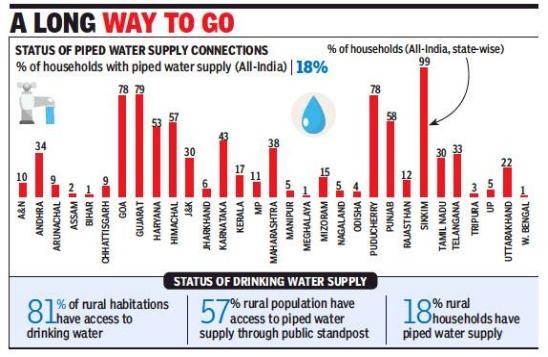PREVIOUS
Groundwater Pollution Crisis
August 13 , 2025
95 days
436
0
- Over 85 per cent of rural drinking water and 65 per cent of irrigation water in India come from groundwater.
- The 2024 Annual Groundwater Quality Report by the Central Groundwater Board (CGWB) shows over 20 per cent of samples from 440 districts are contaminated with nitrates.
- Excess fluoride affects more than 9 per cent of samples, causing dental and skeletal fluorosis mainly in Rajasthan, Andhra Pradesh, and Telangana.
- Arsenic levels in Punjab and Bihar exceed World Health Organisation (WHO) safe limits, causing cancer and neurological disorders.
- Uranium contamination above 100 parts per billion (ppb) is found in Punjab, Andhra Pradesh, and Rajasthan due to fertilisers and over-extraction.
- Heavy metals such as lead, cadmium, chromium, and mercury from industrial discharge cause health problems, including neurological damage.
- Over 13 per cent of groundwater samples exceed safe iron levels, leading to gastrointestinal disorders.
- Groundwater pollution causes diseases like skeletal fluorosis, affecting 66 million people and cancer linked to arsenic exposure in several districts.
- Nitrate contamination poses a serious risk to infants, causing conditions like blue baby syndrome.
- India’s groundwater pollution is a public health emergency threatening the lives of over 600 million people daily.

Leave a Reply
Your Comment is awaiting moderation.


